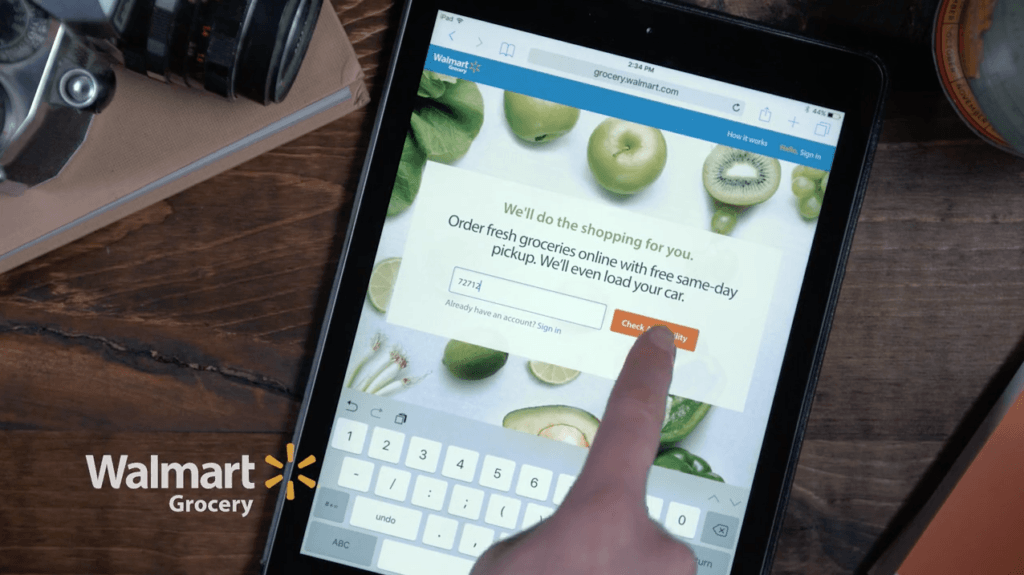
If you want to save money on your groceries, but don’t want to wait for sales or bother with coupons, your best bet is usually to head to Walmart. But what if you want to shop online?
Don’t click over to Walmart.com until you consider your options.
Two recent studies show that two other retailers have better online grocery prices than Walmart – and both findings are surprising in their own way.
The first report, from the retail consultancy firm Brick Meets Click, crowns ALDI the online low-price leader.
Yes, ALDI. “This isn’t surprising, unless you didn’t realize ALDI has an online grocery service,” the report reads. And most shoppers probably didn’t, since ALDI is only testing grocery delivery in Los Angeles, Atlanta and Dallas in partnership with the grocery delivery service Instacart.
Brick Meets Click compared the total price of a basket of 34 “commonly purchased products” in the Los Angeles market, including dairy, produce, meat, frozen food, packaged food and health and beauty items. It found that ALDI’s total was $83. That was 4.5% lower than Walmart’s $87. Amazon checked in at $126, Amazon-owned Whole Foods’ total was $137, and the total bill at traditional supermarket Vons was nearly twice as high as ALDI, at $153.
Part of the reason for ALDI’s low prices, at least as compared to traditional grocers, is that it typically doesn’t offer deep discounts. Its everyday low prices are pretty much the same, whether you shop in store or online.
Not so at traditional, promotional, grocery stores. “Many of the conventional grocers’ in-store price deals are not available online,” Brick Meets Click notes. At one store, a package of bacon was on sale for $4.99. But online it cost $5.79.
Some online customers of those stores may be accustomed to paying more for the convenience of having their groceries delivered. But it doesn’t have to be that way. “The fact that ALDI is even evaluating an online service says a lot,” the Brick Meets Click report reads. It means that online grocery shopping isn’t just for those who have more money than they have time. You can actually save time and money, together.
But what about Amazon? It landed in the middle of Brick Meets Click’s pricing survey. But a separate study by the personal finance marketplace LendEDU declared Amazon to be even cheaper than Walmart.
LendEDU compared the prices of 50 grocery and non-grocery products. Walmart’s prices won overall, but Amazon beat Walmart in the grocery category. Granted, LendEDU’s grocery basket only contained ten items, but Amazon’s total was $34.99 as compared to Walmart’s $45.14 – a 22% savings.
“Add in the convenience factor of same day and one-day shipping provided to Amazon Prime members, and it becomes obvious why many are now choosing to do their grocery shopping from their computers,” the report concludes.
Neither report is great news for Walmart, which just yesterday reported disappointing online sales for the final quarter of last year. “We’re going to continue expanding our eCommerce business as it relates to food. Online grocery is ramping up,” Walmart CEO Doug McMillon promised, though Chief Financial Officer Brett Biggs added that “we’ll continue to be aggressive, but thoughtful, on pricing.”
Walmart’s commitment to offering the lowest possible grocery prices online is somewhat questionable, actually. Late last year, Walmart.com began showing “online” and “in-store” prices, subtly showing you how much you could save by not shopping on Walmart’s website and shopping in its stores instead.
The two price surveys were released just as a third study predicts that a majority of us will be buying groceries online within the next few years. The Food Marketing Institute and Nielsen are predicting that 70% of consumers will be grocery shopping online by 2024, just six years from now.
Similar predictions have been made before. But this time, the FMI and Nielsen say, believe it. “The pace of change and adoption has far outrun initial predictions,” their report reads. “Omnichannel shopping has passed the tipping point with online grocery shopping on an accelerated path to industry saturation.”
Convenience is certainly a factor in online grocery shopping’s increased adoption. But the cost of getting your groceries online is coming down, too. “It’s easier for shoppers to compare prices online than it is to compare prices using printed circulars,” Brick Meets Click notes. A previous Brick Meets Click survey found that online grocery shoppers wanted to have access to the same coupons and deals that are available in stores. Once that happens – you may never need to visit a grocery store again.
So if you aren’t already getting your groceries online, you might want to visit your favorite stores’ websites and see what they have to offer. Because assuming that Walmart’s prices are always going to be the best, could prove to be costly.










